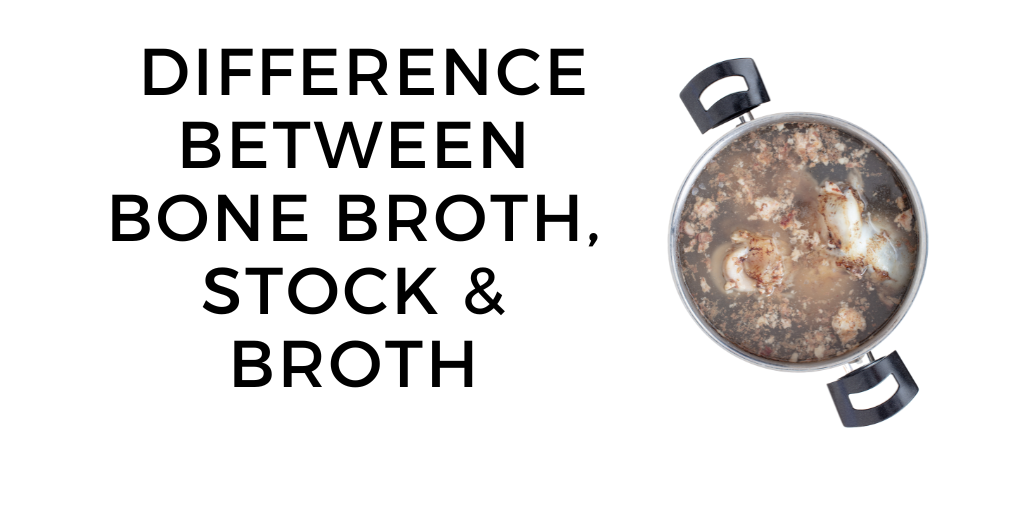
Bone Broth vs Stock: Differences, Nutrition, Benefits and Uses
Bone broth vs stock vs broth
You see, bone broth, broths and stocks all share the same foundation: bones, meat scraps and vegetables simmered in a pot of water.
However, differences lie in the preparation, timing and specific ingredients used.
The main difference between bone broth and stock is that bone broth is cooked for at least 16 hours while stock is cooked for 1-2 hours.
There are many other differences you'll want to know about in this article.
And since variety is the spice of life, it's worth briefly explaining the differences between bone broth and chicken broth, for example.
First a quick disclaimer: my company makes and sells the absolute highest quality chicken bone broth you can find.
So if you're looking for a chicken broth recommendation, that is it. With that out of the way lets get into it.
Broth
- Mainly uses meat
- Cook time is typically 45 minutes - 2 hours
- Used for cooking, tastes great.
Stock
- Uses meat scraps, bones, vegetable scraps... anything
- Cook time ranges 2-12 hours typically
- Used for cooking mainly
- More concentrated than broth
As you'll see from the image below, chicken broth is not the same as bone broth.
Chicken Bone Broth vs. Stock Infographic

What is stock?
Chefs use stock as a base for sauces and other dishes or in place of fat for sauteeing. Stocks are traditionally made using mostly bones - scraps mainly from the kitchen or whatever is in the freezer.
Stocks also typically cook for relatively shorter times. They can be simmered for 2-5 hours, although some chefs prefer a longer simmer. Some will even leave them over night.
The difference between stock and broth
The difference between stock and broth is that broth is simply meat simmered in water while stock has more ingredients. At least historically that's what it was.
Stocks use all scraps including bones, vegetables and some meat, while broth's are made using mainly meat scraps.
The other difference between stock and broth is the cook time.
Broths take between 45 minutes to two hours to cook. Again, there is a huge range in time between cultures historically.
Broth vs. Stock Differences

This is meant to give you an idea of the difference between stock and broth.
Since no bones are used, broths lack the nutritional punch and gelatin quality compared to stock.
But what they lack in nutritional quality, they more than make up for in taste. Broths taste great. You'll most likely prefer drinking a broth over a stock. Broths tend to impart a more recognizable flavour to our pallets.
Your typical stock has more gelatin and nutrients but slightly less flavour than stock. The gelatin is produced via the gentle breakdown of collagen from the bones during a long simmer at low heat.
The gelatin quality and strong flavour is what makes stocks great for cooking!
So with that, how do you get the best of stock and broth? Funny you should ask!
Difference between chicken stock and chicken broth
The difference between chicken stock and chicken broth is that chicken stock uses chicken bones and vegetable scraps while chicken broth uses chicken meat, flavors, additives and preservatives to mimic chicken flavour.
The other difference is that traditional chicken stock is cooked from 1 hour to all day while chicken broth is typically cooked for 45 minutes to one hour.
Keep in mind there is a big difference between a stock that a chef makes and a stock you find in the grocery store. Same goes for broth.
Both chicken stock and chicken broth in grocery stores are typically made from concentrates and contain added salt, preservatives, yeast extracts and flavour mimicking agents.
Neither are great unless you are desperate to cook a recipe.
Enter Bone Broth
The paleo communities’ adopted stepchild, bone broth has gotten a ton of attention in paleo and mainstream media.
And for good reason. It is a potent beverage that boasts a serious nutritional punch.
Bone broth is different from chicken broth. It is a liquid that has more protein, collagen, electrolytes, vitamins and minerals than chicken broth.
Chicken broth may be ok for cooking, but bone broth is much for concentrated and delicious. Bone broth also gives you nutritional benefits, while chicken broth does not.
Difference between bone broth and stock
The difference between bone broth and stock is the cook time (bone broth is cooked for way longer) and the quality of ingredients and types of bones used.
Bone broth uses specific bones with lots o connective tissue to harvest collagen and amino acids. On the other hand, stocks primarily use bones with no connective tissue or adhering meat.
Bone broth's are simmered for up to 48 hours to maximize the protein while stocks are cooked for 1-6 hours.
The last difference between bone broth and stock is in the nutritional content of the finished product. Bone broth must have at least 7 g of protein per cup to be considered real bone broth. Stock, on the other hand, usually has 1 g of protein per cup.

How do you make bone broth?
High quality meaty bones make for the perfect base for any bone broth. This will make sure that your bone broth has both the familiar taste of the broths you were raised on as well as the nutritional benefits of the bones.
Try the best bone broth recipe!
There are a lot of sketchy brands on the market. You must look for a real bone broth that provides nutrition with a great taste. Bluebird Provisions is a brand that offers a traditionally simmered product that you will love.
Since bone broth is full of vitamins, minerals and protein, it is a great way to cover your nutritional bases.
Where does bone broth nutrition come from?
The gradual conversion of collagen into gelatin imparts the majority of the nutrients.
The tricky part is that collagen extraction takes a long time: that is why we recommend that you simmer your bone broth for at least 16 hours on a very low heat.
You want it low enough so that bubbles come to the surface every 10-15 seconds.
If you have high quality bones and the right ratio of water to bones, your broth will gel once cooled. This is the holy grail of bone broth making. You want your broth to resemble one of your favorite childhood lunch snacks.

Look for brands that offer a low and slow simmer to their bone broth. You can get gelatinous bone broth with a cook time of 12-16 hours, provided that you know what you're doing and have the right bones to water ratio.
Here is a complete checklist for what to look for when buying bone broth.
A 'low and slow' technique ensure that all of the vitamins, minerals and collagen is leached from the bones into the remaining broth.
Why do you use different cook times for bone broth?
You use different cook times for bone broth because chicken bone broth doesn’t require long simmer due to the bones size and structure. They are not as dense and thick as beef bones. Thus, collagen extraction happens quicker.
Bone broths represent a wonderfully soothing liquid. They nourish your body from the inside out. There is particularly compelling data showing that bone broth helps fix common digestive issues.
Using Bone Broth as a Stock Substitute
Bone broth can be used in place of any liquid in any recipe or aspect of cooking. It’s an easy and efficient way way add some great flavor to your cooking.
My family soaks and cooks our grains, stir frys and steamed vegetables all using bone broth!
Bone broth also makes for the perfect base for any soup, stew, sauce or salad dressing.
Or if cooking is not your thing, it's wonderful to sip on it's own. In that case, you can start with 1-2 cups per day for nutritional benefits.
If you are suffering from chronic joint pain or any digestion or food intolerance issues, you'll want to drink 2 cups per day to restart the healing process of your joints and gut.
Swap out your afternoon coffee with a cup of bone broth and you'll notice the instant relaxing feeling as you wrap your hands around the cup.
Bone broth tastes great on it's own, however you can add even more flavor and nutrients by sprinkling some turmeric or grating a teaspoon of ginger on top of your hot broth, then gently stirring it in.
You can even use beef bone broth to concoct the most amazing salad dressing you’ve ever tried.
How to find bone broth
You can find bone broth online and at most grocery stores, however, you must find the absolute best bone broth for you.
There are many fake brands mislabelling stock as bone broth. To be sure, you must look at the nutrition facts and ingredient lists.
Bluebird Provisions makes the highest quality, delicious tasting bone broth you will ever try. Try some today.
Or you can checkout my guide on where to buy bone broth to find some near you.
What does bone broth taste like?
Bone broth tastes like a rich and delicious broth, similar to a chicken soup broth. You will notice the delicious flavor as it hits your lips. Bone broth is incredibly satisfying and satiating to your pallet.
How does vegetable broth compare to bone broth?
Vegetable broth is completely different than bone broth because of the lack of bones. As such, you cannot get any nutritional benefit out of vegetable broth. There are no vegan alternatives to collagen or gelatin on the market.
Can I substitute chicken stock for chicken broth?
You can use stock in place of broth if that is what you have on hand and you are desperate. However, bone broth is the absolute best liquid to cook anything with.
Can you use bone broth for soup?
You can use bone broth for soup. Just add some to your pot, along with your soup ingredients and you'll have a nutritious and rich tasting soup. It can be used in place of water, stock, broth or bouillon in any soup recipe.
Closing Thoughts
So there you have it! Since traditional chefs, home cooks and the paleo community seem to be at odds with this whole bone broth vs. stock situation, I hope this article clarifies things up for you!
Don't worry about the semantics, just try making your own bone broth and see how it instantly changes your body and mind! And if you need a product recommendation, try the chicken bone broth from Bluebird Provisions.

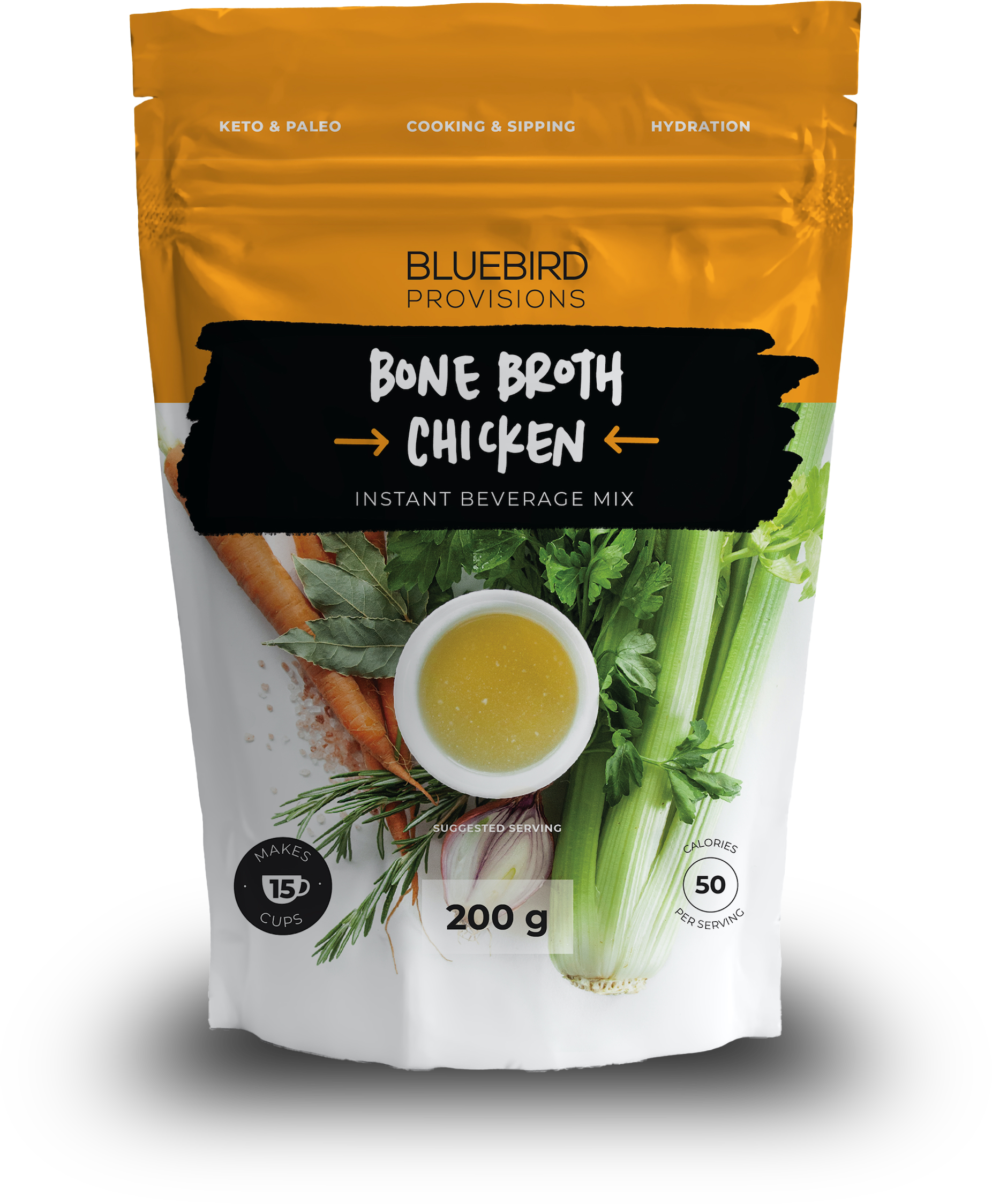
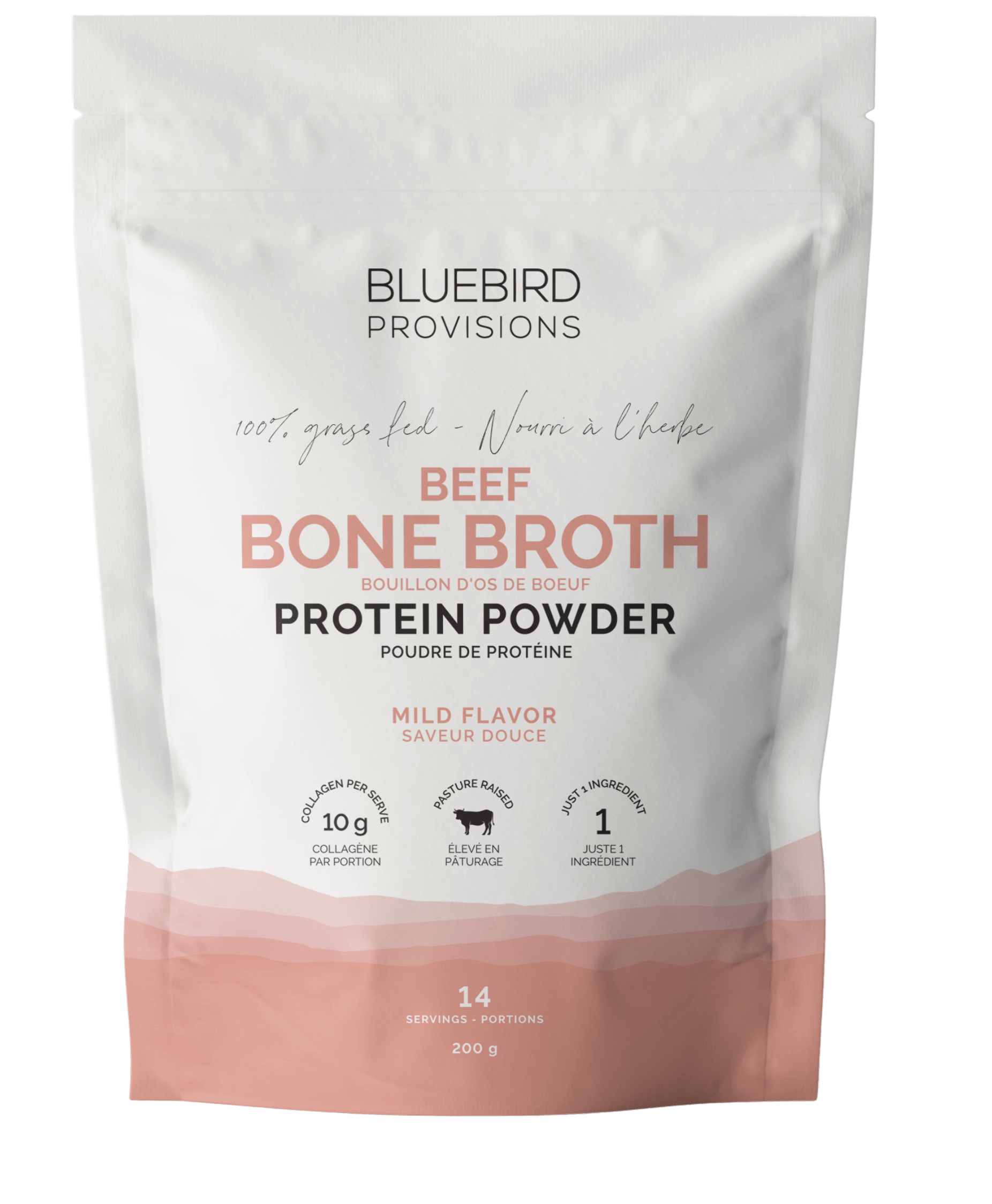
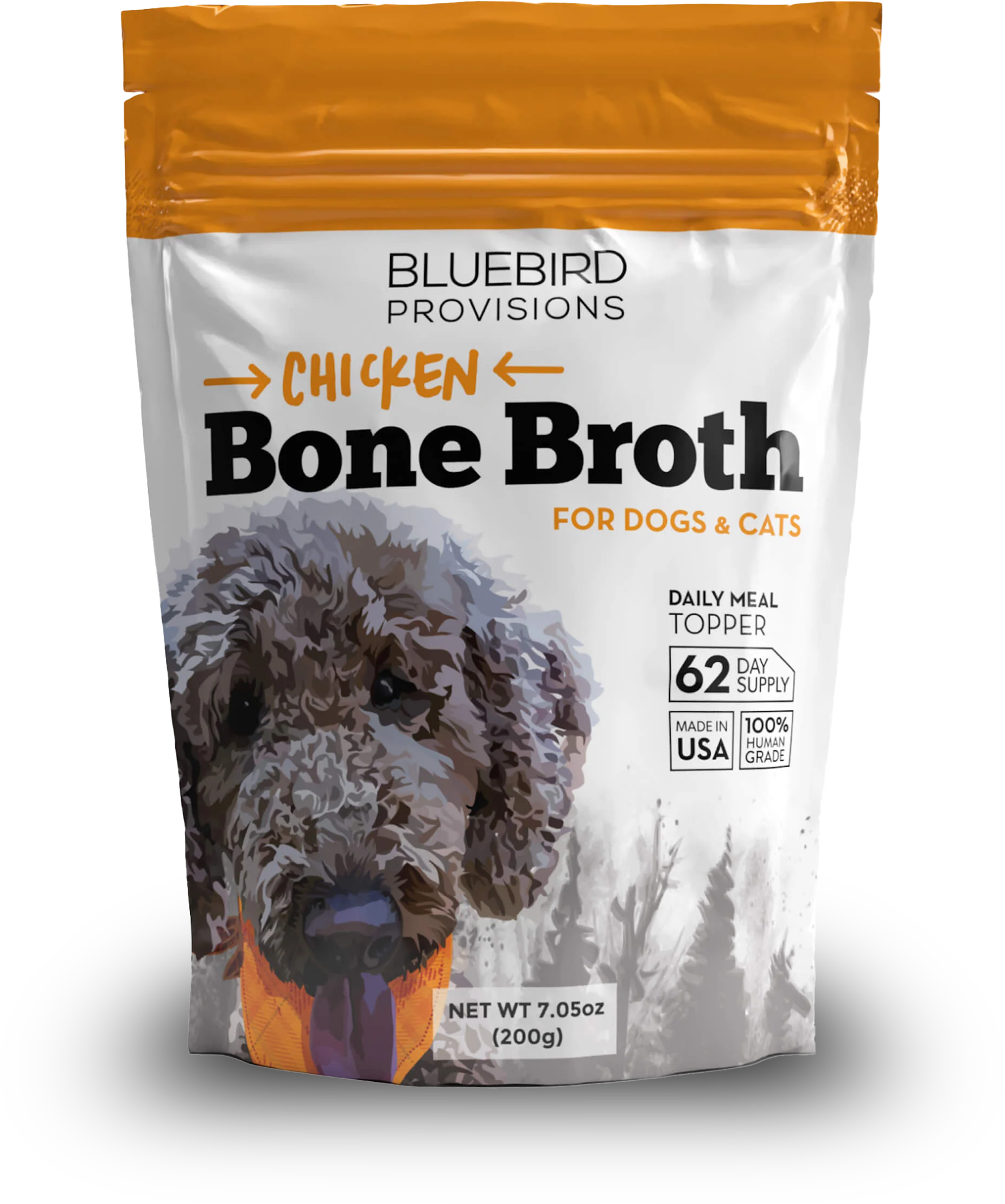
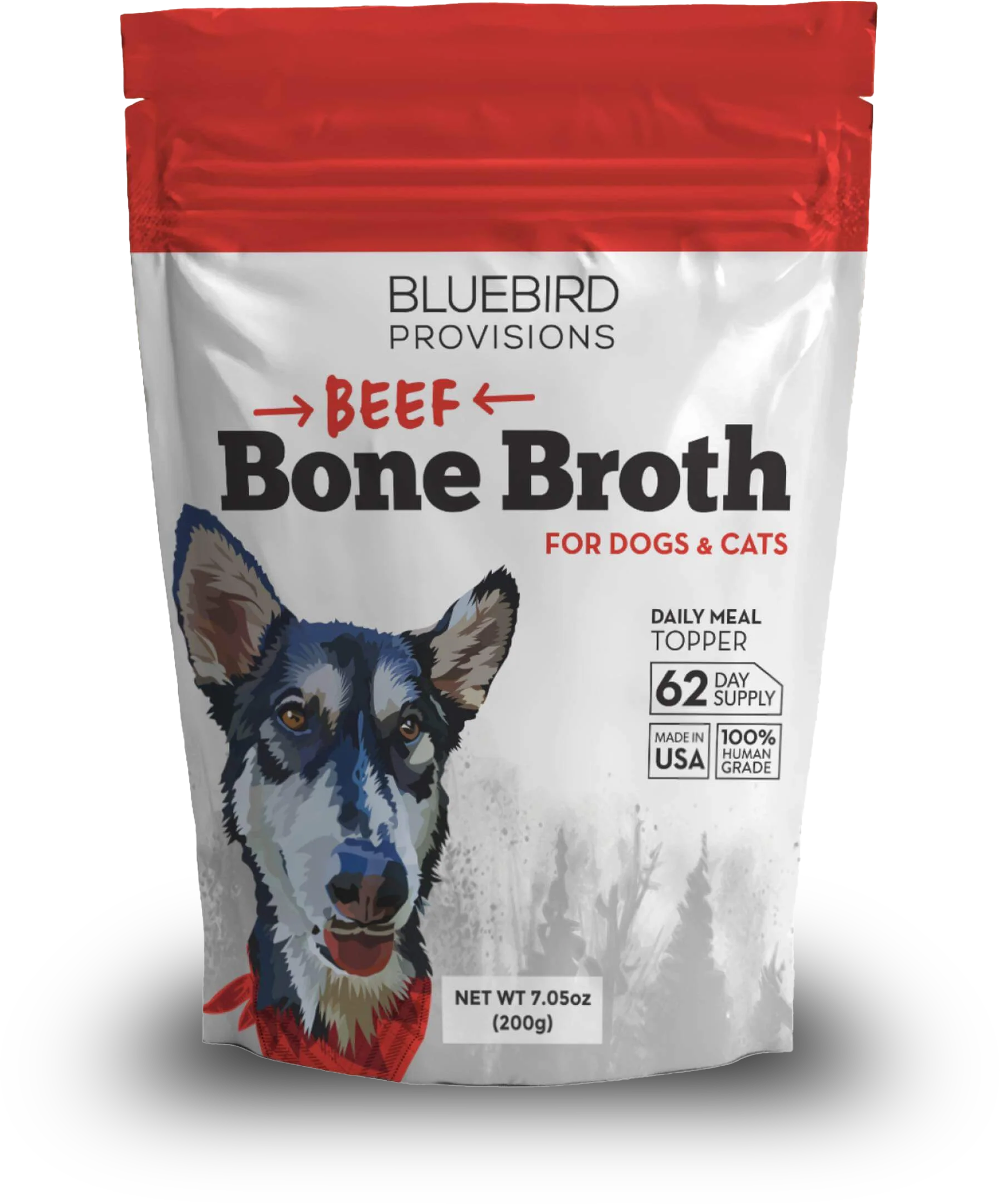
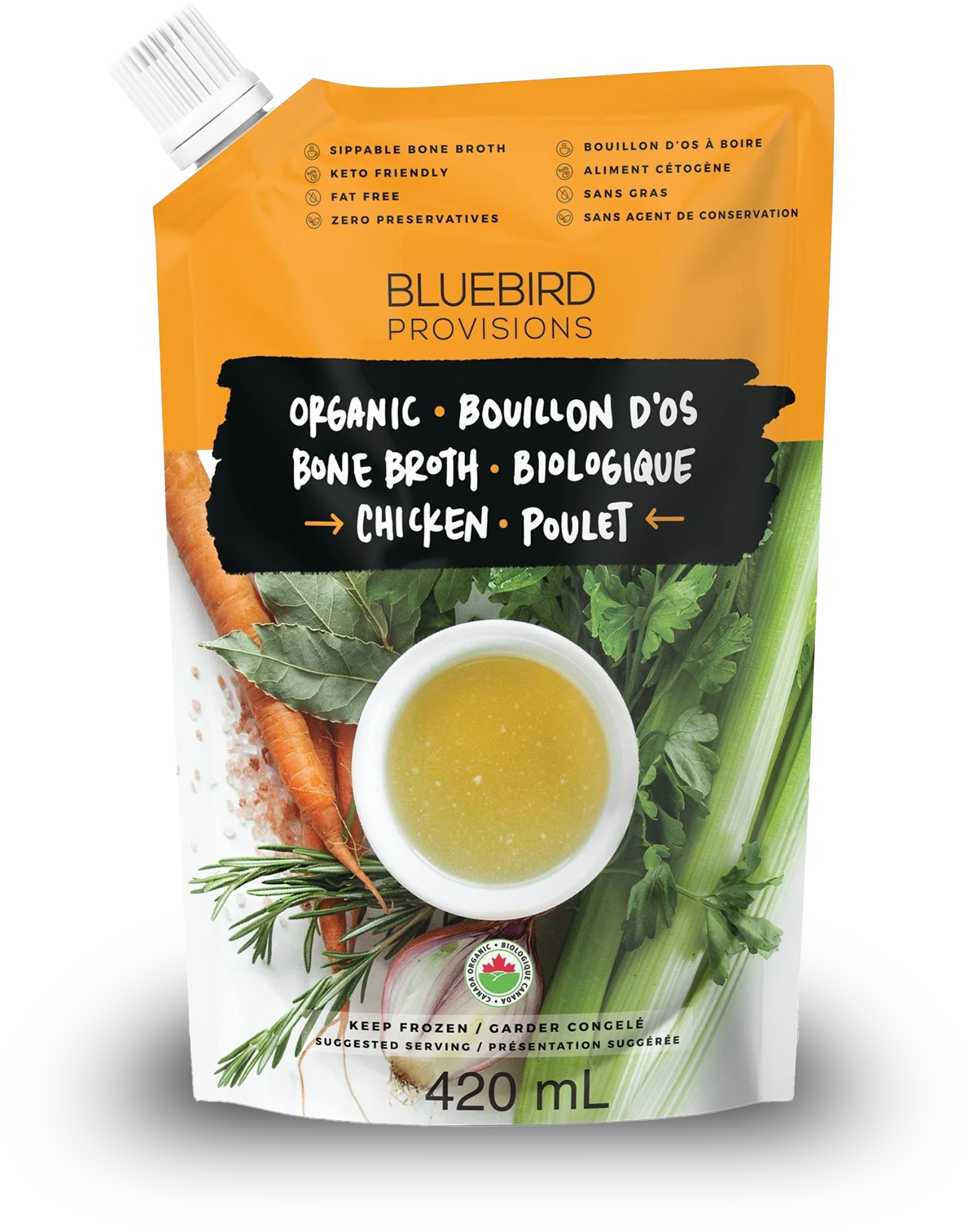
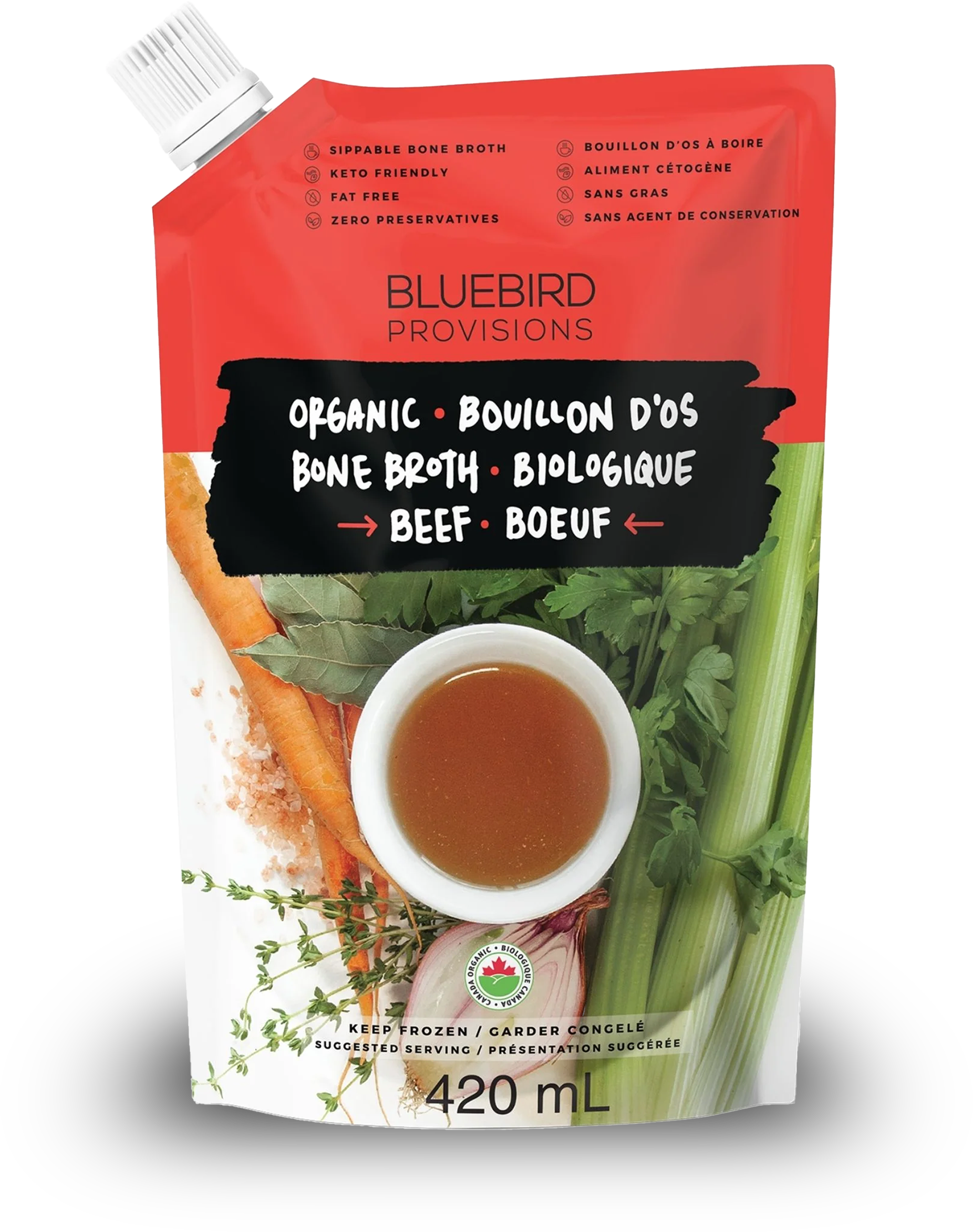


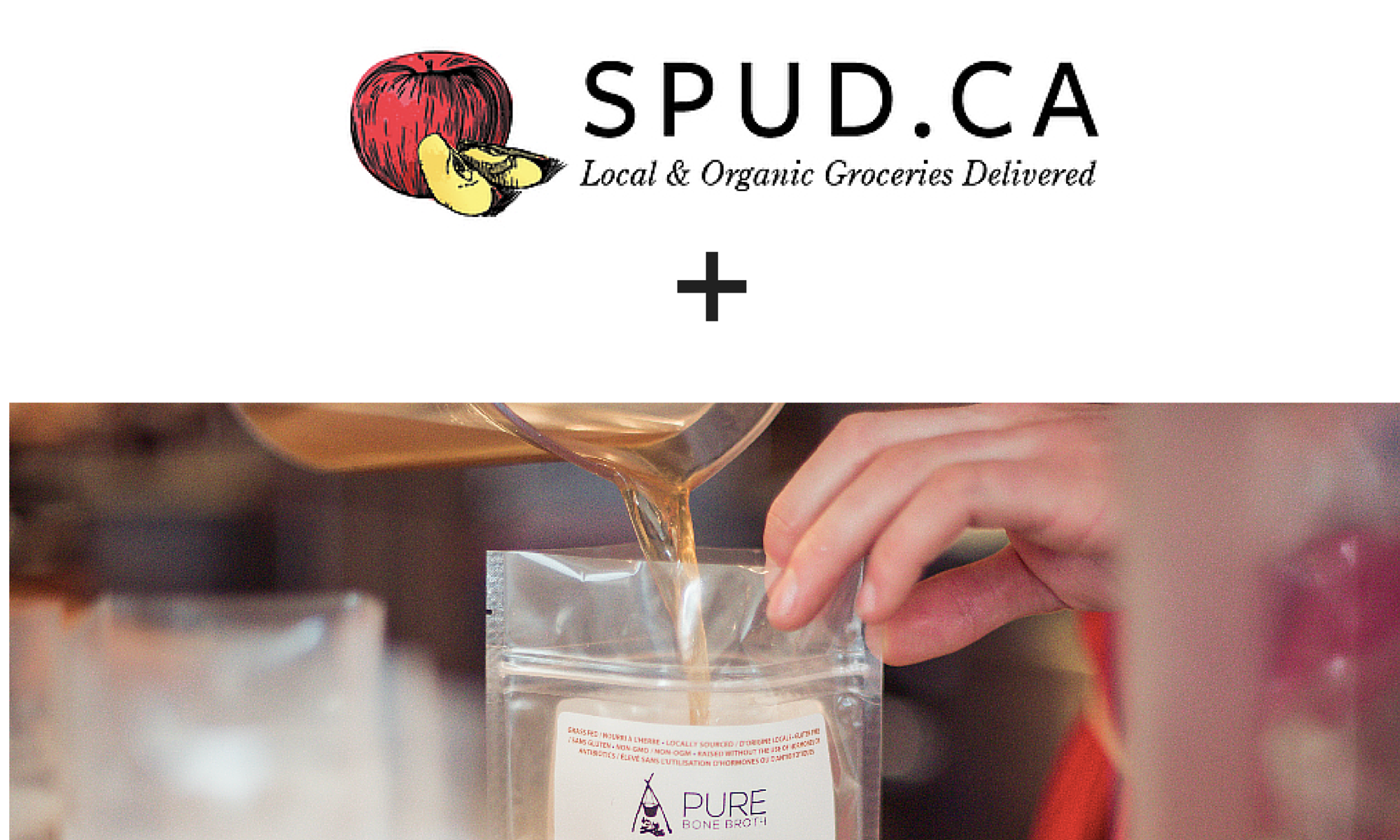
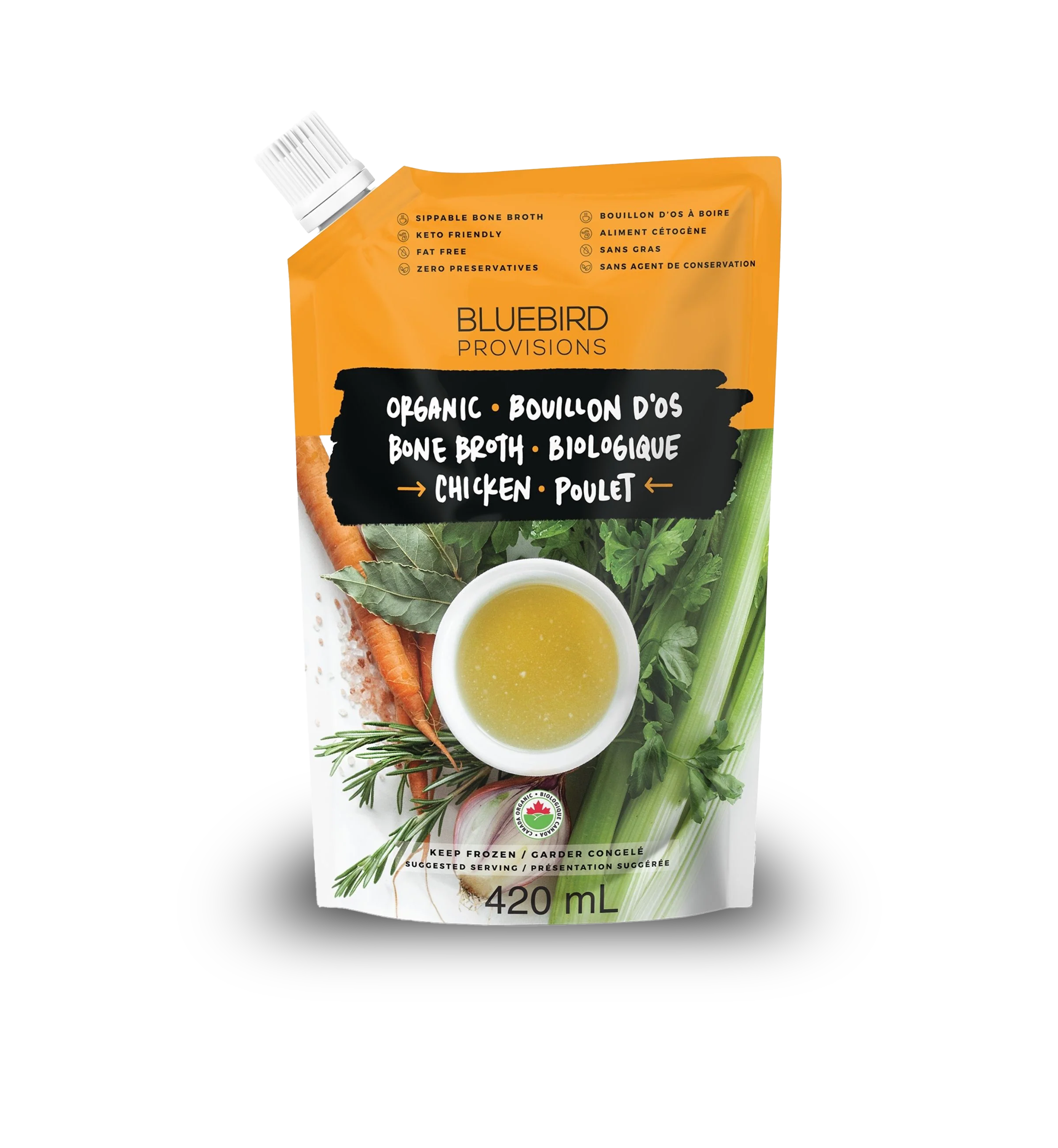
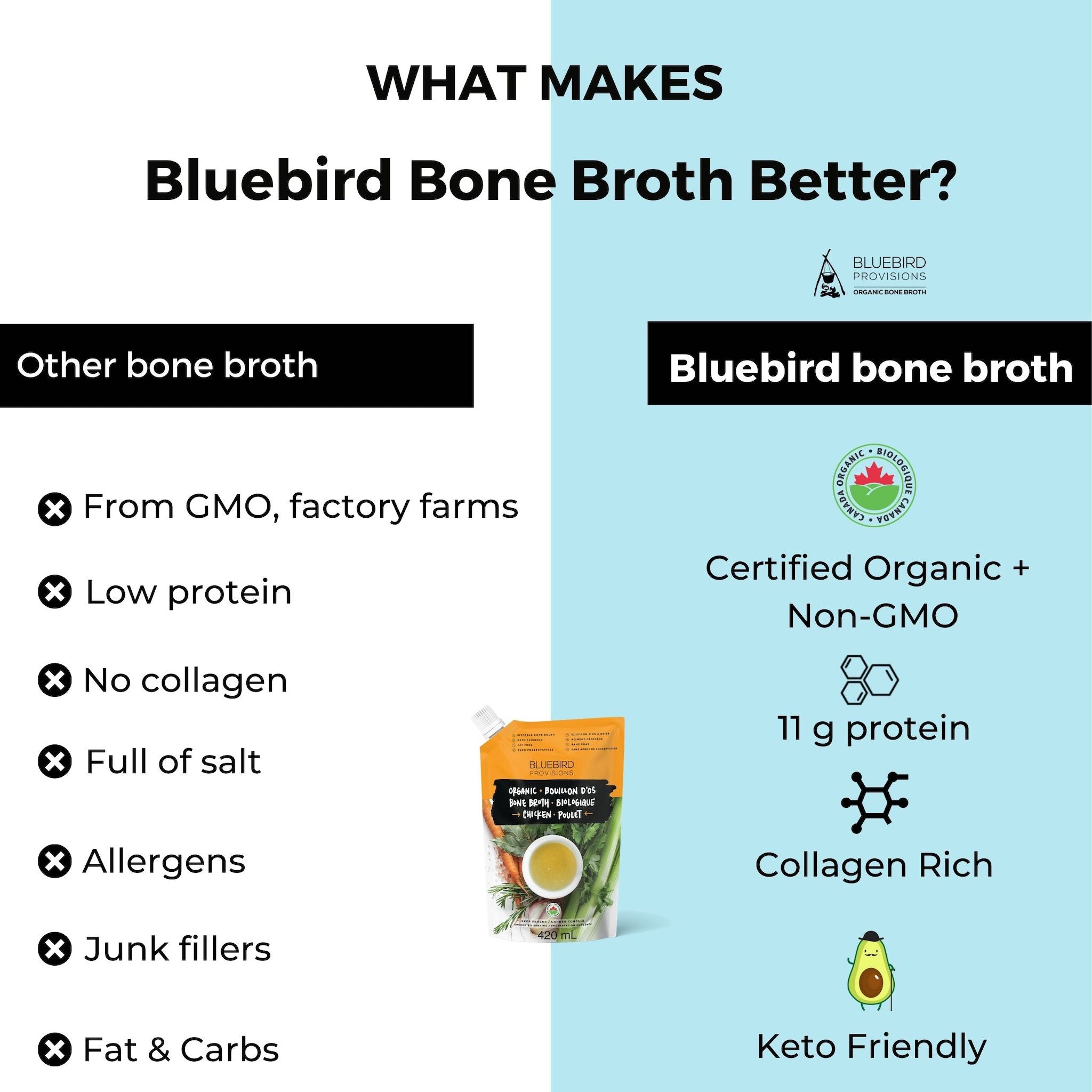
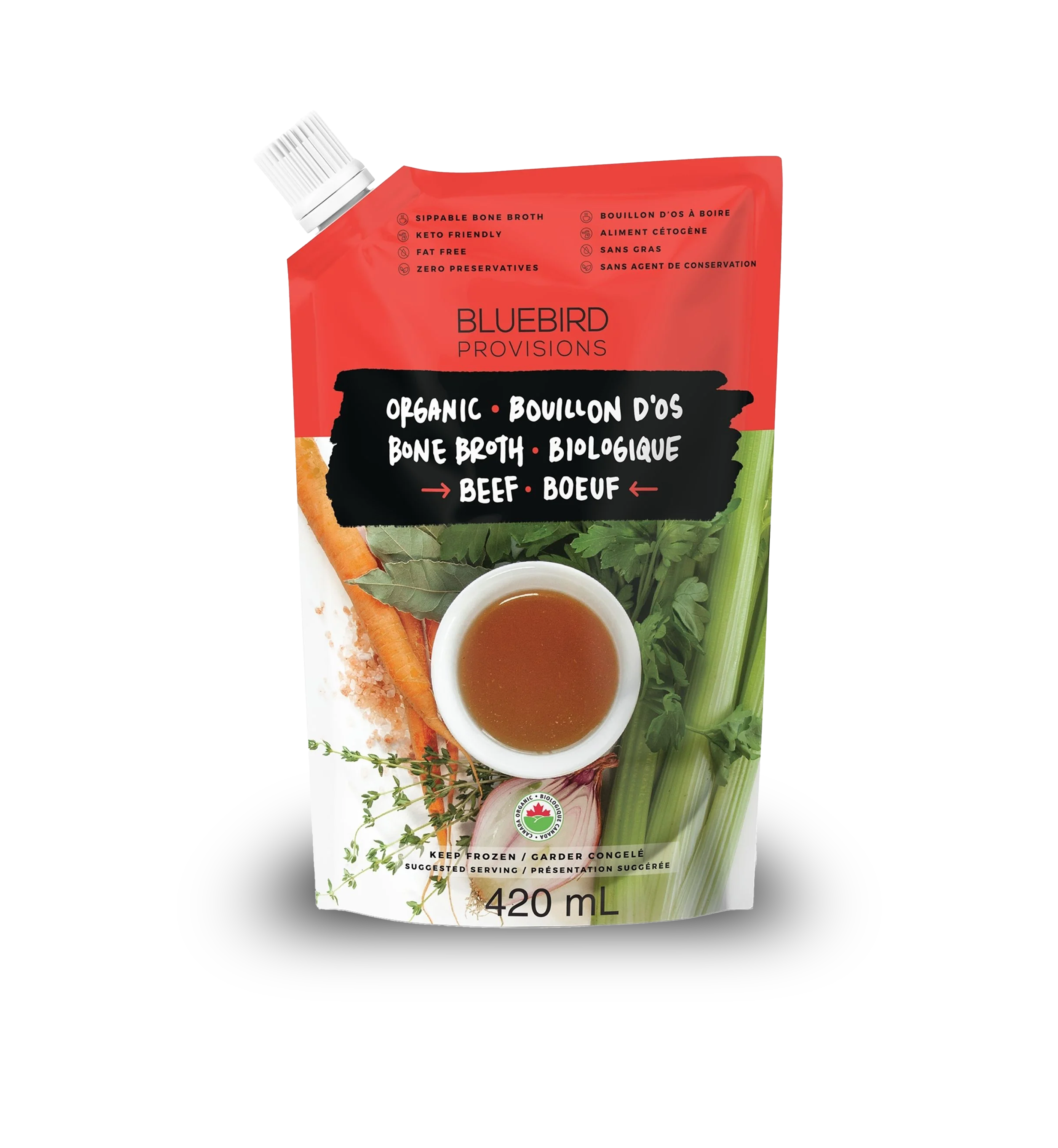
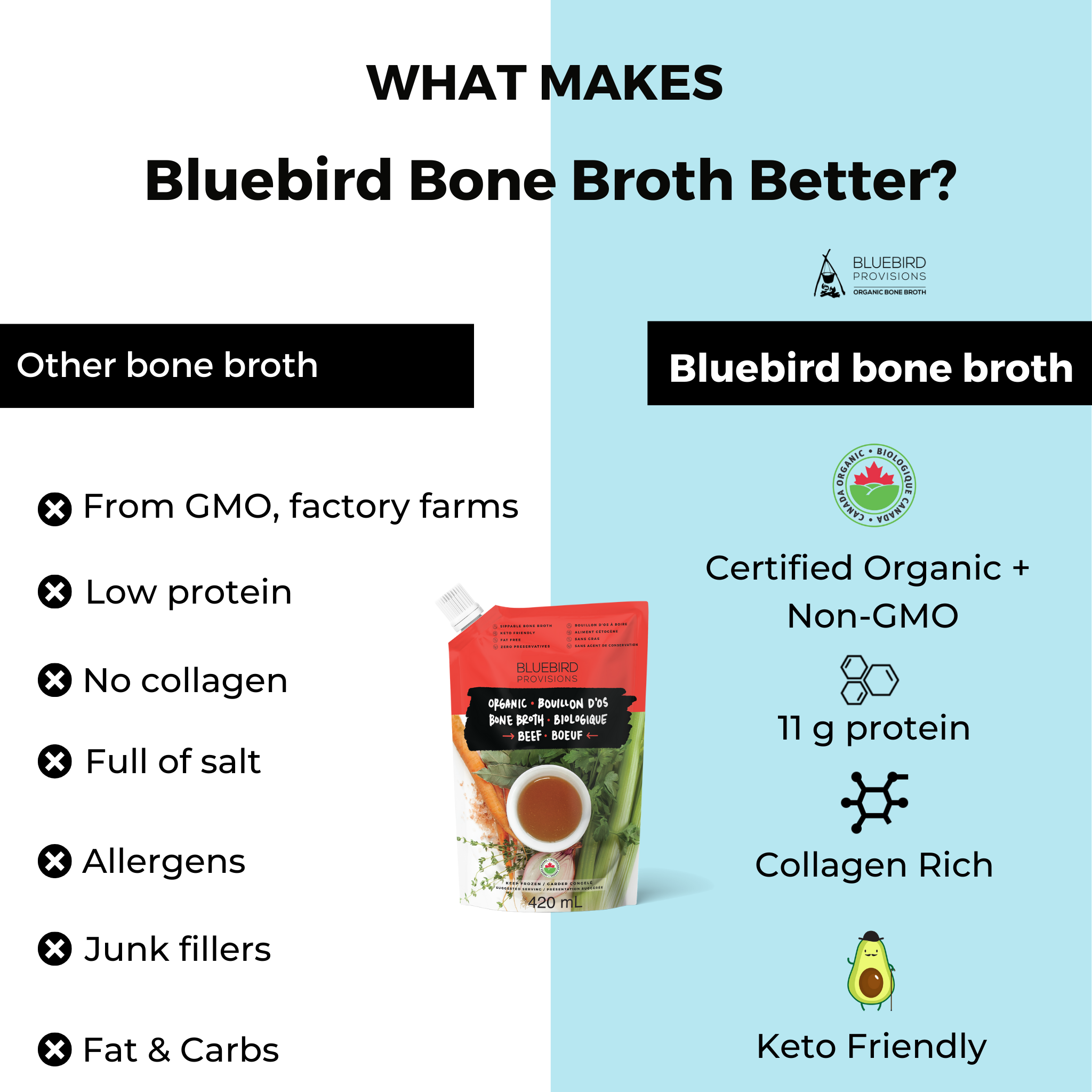
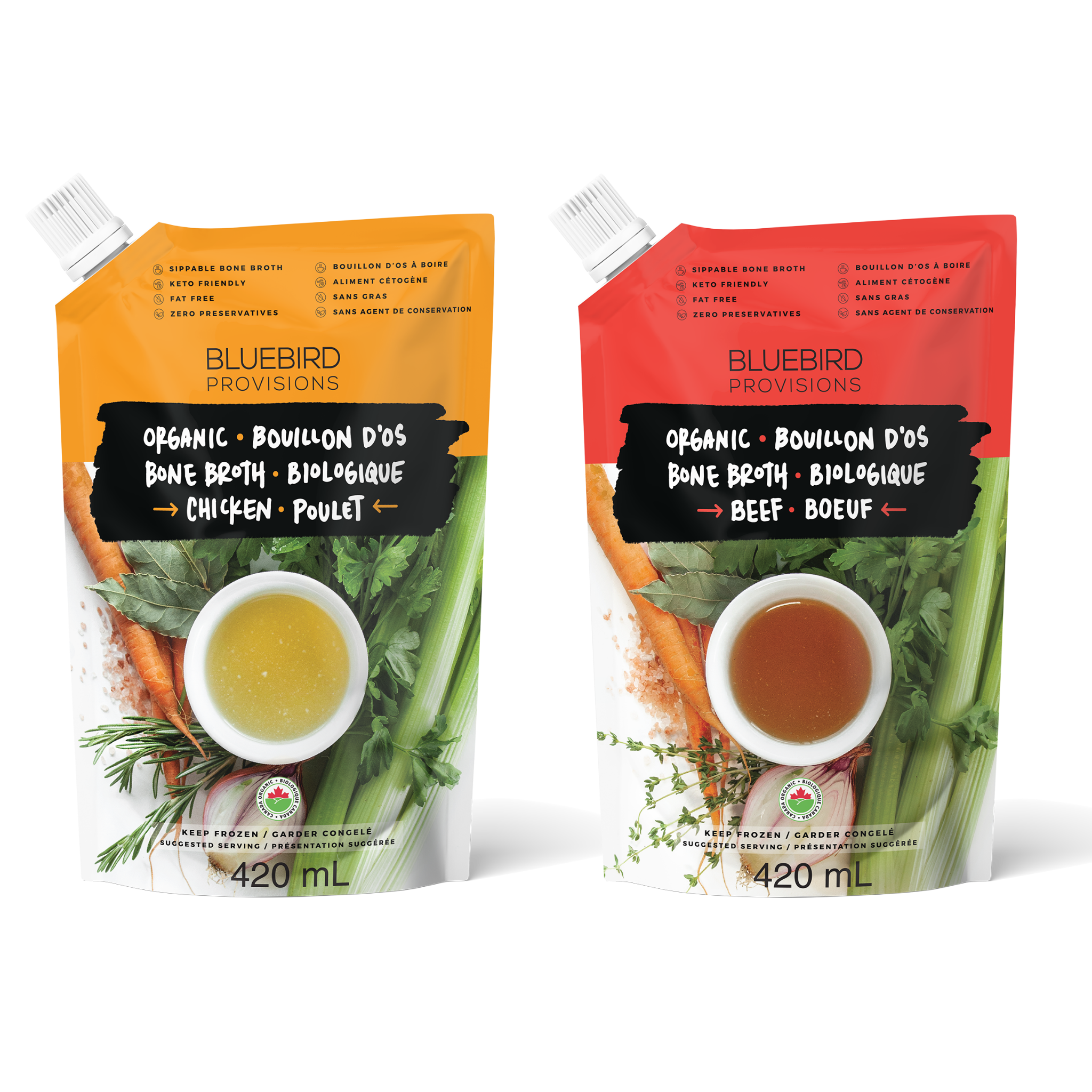

20 comments
Dear Connor,
isn’t 1:8 ratio solids to liquid to low?
1 kg meat (chicken breast) and 8 l of water for only 2 hours, wouldn’t be it tasteless?
I’ve read it is better to start with meat broth to heal my gut, because bone broth is harder to diggest and I have really sensitive stomach, but I worry about the taste.
I made broth just putting chicken breast and ad water to cover 2 -3 cm above and cook about 4-6 hours, maybe I did it wrong….
thank you
Monika
Hi Blaze,
To answer your questions:
1. YES! Checkout this article on how to use pressure cookers: https://bluebirdprovisions.co/blogs/news/instant-pot-bone-broth-recipe
2. Yes it makes absolutely rich and delicious gravy! Just replace broth for bone broth and you are good to go.
Connor Meakin
Two questions if I may.
1. Could you use a pressure cooker to shorten or improve the bone broth making process?
2. Does bone broth make good gravy?
Thank you
Blaze Katich
Whenever I have anything with bones, be it a turkey or chicken carcass, ribs, pork chops whatever I take all the meat off the bones and put the bones in a pot with onions, mild peppers, any tired herbs I have around the house, leftover veggies and water to cover, bring it all to a boil and then let it simmer on low for the next few days, adding more water if necessary. I then put it all through a fine sieve, saving what is in the sieve. The Chines call this “prime” which I save in jars in the freezer. I then add more water to the pot and the bones and veggies and simmer those a second time for a few days. The Chinese call this “clear” and I save that in jars in freezer also. The second batch is not as strong tasting but still flavorful. I use both in soups, sauces, drink it, instead of water for cooking veggies or beans or rice, mashed potatoes, you name it.
Sometimes I save bones in the freezer until enough I have enough to fill a large soup pot so that I will have several quarts of this delicious broth ready at hand. I even asked my next door neighbor for their turkey carcass which they were throwing out and use the carcass from take-out roasted chicken which is already flavored. So good and free for the asking. People have been doing this for centuries, this is nothing new. It has always been used for sick people recovering from whatever.
Segelkatt
I would like to know if you get the same benefits by consuming broth like swanson’s.
Stella Chavez-Butler
There is no effective difference between a well-made stock and so-called “bone broth,” except the trendster sobriquet.
Jason
Great question Stephanie!
In your case it sounds like the remaining liquid in your crock pot is broth. Does the liquid turn into Gel when in the fridge? This is a great test to see the protein content of the finished broth or bone broth. If it fully gels then you can expect it to have at least 6 grams of protein per 250ml. More if it is very thick.
hope this helps!
connor
Connor at Pure Bone Broth
Hi Ginette,
I wouldn’t recommend Campbell’s broth as it has very low protein content (1 gram per serving) compared to most bone broths which should have at least 7 grams per serving. Without the protein you are getting none of the collagen and gelatin which is the majority of the healing properties of bone broth.
I can’t speak to where Campbell’s sources any of there ingredients. So best to check with them on that.
Thanks for your comment!
connor
Connor at Pure Bone Broth
Hi Renee,
I’m glad to hear that bone broth is helping your herniated disc. It’s best to consume bone broth with vitamin c before movement or exercise. This will increase collagen synthesis around your injured disc.
Unfortunately Pure Bone Broth is not sold in New York yet. However I’m sure whole foods has a couple of great broths to try. Make sure they are organic, grass fed and use organic vegetables, herbs and spices. Good Luck!
Connor at Pure Bone Broth
I appreciate the explanation, but I’m still a little confused. If I use a crock pot to cook a whole chicken (no head or feet) and add NO water, there is always 2-3 cups of liquid after it’s done cooking. Is this broth or stock? All definitions I’ve seen start with simmering meat or bones in water. Since I’m not starting with water and it has all the meat and bones of one chicken, I’m not sure what my liquid is. I do understand that it is not bone broth and doesn’t have the same nutrient content as bone broth due to the cooking time, but is it still healthy to drink? Thanks in advance for any clarification.
Stephanie
Can I just buy Campbell beef broth instead of making bone broth. Thanks
Ginette
I greatly appreciate the detail difference of explaining bone broth vs stock.
I have been drinking bone broth for 4 months now and I love it because of its benefits to assist with the healing of my herniated disc.. Upon reading the pure natural ingredients of your brand, I wanted to buy Pure Broth brand. I have a Whole Foods in my area of Brooklyn, New York.
What designated area would I be able to locate it: shelf or refrigerated area? I can ask a store clerk. Thank you so much. I look forward to trying your brand.
Renee
Hi Sheila,
Luckily our bone broth has zero fat per serving so you do not need to worry about any of the fat causing high cholesterol.
We remove all of the fat before we package our bone broth. It is pure protein with 8 grams per 250ml serving. No carbs and no fat.
Hope this helps and let me know if you have any other questions about bone broth.
ps i am only speaking for our bone broth. Some others may not remove the fat and as such there may be some in the finished bone broth. Best to look at the nutrition labels before buying anything if you are concerned.
connor
Connor at Pure Bone Broth
I’m interested in bone broth but concerned that the high fat will cause cholesterol problems. Any advice?
Sheila
Hi Marion, I’m so glad you found our bone broth and were able to get it at Whole Foods!
Yes we are doing a demo at Whole Foods Cambie this coming Saturday Dec 11 from 2-6pm. Our demo lead (Calvin) will be able to answer all of your broth related questions.
connor
Connor at Pure Bone Broth
Hello Connor: I went to Whole Foods expressly to pick up some bone broth. I’d called ahead to make sure they had plenty. When I was looking for the freezer case I ran into your Dad who was ever so proud to show me where I’d find it! He mentioned that you’d be doing a talk / demonstration this coming weekend – is that right? And where/ when exactly will this be?? Would you let me know? I have checked with Whole Foods but they don’t seem to know unless it will be with the butcher Sat 10 Dec 2016 between 12N and 3:00 pm?
Marion Allaart
Thanks for your comment H. Wordhouse! My simple response as to “why bone broth instead of calling it stock” is that it sounds more appetizing to the consumer.
We are talking about semantics here in the food industry for which there is a lot of precedent for with respect the naming and terms at the consumer level. For example: we call it calamari instead of octopus, foie gras instead of force fed duck cooked a certain way, etc. I could go on, this is what happens in the consumer driven food industry.
Hope this further clarifies where I’m personally coming from.
Connor at Pure Bone Broth
So, by ‘bone broth’, you mean Stock?
Boiling fresh bones in clean water for hours (and sometimes days) is Stock and has been stock since bones first hit water. I personally boil my stock for two or three days, leaving it to simmer on low (sometimes on the wood stove.) All the nutritional benefits are available to anyone who puts a bone in some water and, well, boils it then drinks the liquid that results.
Let’s call it what it is, STOCK, and stop overcharging people for a fancier name, eh?
Why call it something fancy when it’s simply stock?
H. Wordhouse
Hi Patricia,
If you have the time and enjoy cooking then I’d recommend trying to make a batch of bone broth yourself.
Just make sure you go to your local butcher to get the best quality bones. Ask your butcher for grass fed and finished bones from pasture raised animals. These tend to be more expensive than your regular soup or marrow bones, but well worth it.
For beef broth you want to ask for mostly mostly knuckle bones as they have the most collagen and gelatin. For chicken you want to ask for chicken frames and also chicken feet.
The bone the water ratio is a bit tricky to nail. Most recipes will give you a decent ballpark estimate. I’d recommend that if you make beef bone broth to simmer it for at least 24 hours. For chicken bone broth you can simmer it overnight for 12-16 hours.
2 cups is a great amount for someone in your position to heal your body and keep it nimble and strong! If you live in Vancouver we have lots of retailers your can find. Or we also deliver. If not, we’d be happy to ship you some broth as well!
Thanks for your comment and best of luck.
-Connor at Pure Bone Broth
Connor at Pure Bone Broth
I am intrigued by the nutritional benefits of grass feed beef, chicken and turkey Bone Broth. I have Acid Reflux, Arthritis and Joint pain and I am 74½ years young.
I want to keep my body as healthy and nimble as long as possible. I am a lone and live on a fixed income. So, I am wondering if it would be cheaper to buy your broth or make it and freeze it (if it doesn’t lose the nutrient’s?) Also are 2 cups enough to rev-up ones body. And would it raise cholesterol levels? Thank you for all the information on your website. Looking forward to some nutritional menus’. Please NO PORK recipes. Thank you. pe
Patricia Enquist
Leave a comment
This site is protected by hCaptcha and the hCaptcha Privacy Policy and Terms of Service apply.